What is the Camino de Santiago?
Imagine stepping onto ancient paths where every footstep echoes with centuries of history. The Camino de Santiago, or the Way of St. James, is more than a walking route—it’s a profound journey of discovery, spirit, and connection.
For over 1,000 years, pilgrims have travelled these trails to the magnificent Cathedral of Santiago de Compostela in Galicia, northwest Spain, believed to be the resting place of St. James the Apostle. The city itself takes its name from him—Santiago meaning St. James and Compostela meaning field of stars.
Recognised as a UNESCO World Heritage Site, the Camino is a living crossroads of cultures, uniting walkers, cyclists, and dreamers from all over the world.
Table of contents
- What is the Camino de Santiago?
- Where does the Camino de Santiago start?
- What are the Camino de Santiago routes?
- Camino de Santiago Route Map
- Cycling the Camino de Santiago
- Who walks the Camino de Santiago?
- Why should I walk the Camino de Santiago?
- How far do I need to walk?
- How do I follow the Camino de Santiago trail?
So, what exactly is the Camino de Santiago?
Nowadays, the Camino de Santiago transcends a mere pilgrimage; it’s a once-in-a-lifetime experience. With its diverse Camino routes, this journey draws thousands from across the globe, offering a unique and unforgettable adventure.
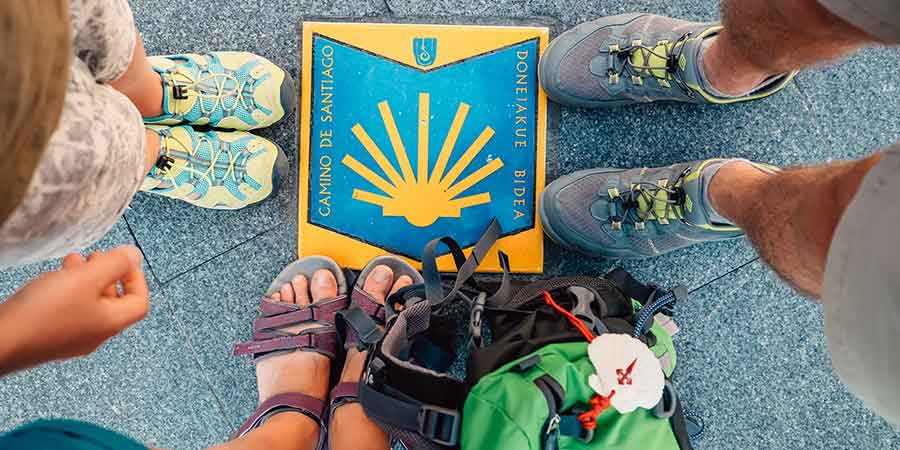
Where does the Camino de Santiago start?
There is no singular starting point for the Camino de Santiago. There are many different routes to Santiago and, in turn, many starting points. Your route depends entirely on your preferences and interests and what you want to get out of the experience.
The reason for the huge variety in starting points is that the original pilgrims would have commenced their Camino journeys from their own homes. So that’s why so many different Camino ways have emerged over the centuries.
Despite this, there has been a clear favourite among the routes. The Camino Frances, also known as the French Way, is the most famous and popular of the Camino routes. Due to this, Sarria, located 100km from Santiago, is the top starting point for pilgrims.
The Camino Portugues Coastal is the second most popular route, especially the last 100km starting in Vigo. If you are curious about our other popular starting points, make sure to have a look at our last 100km Camino collection.
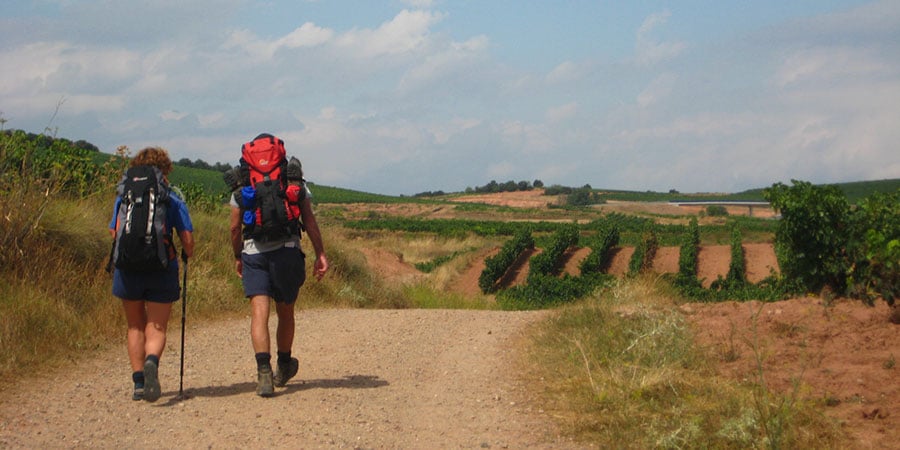
What are the Camino de Santiago routes?
The Camino de Santiago routes are a network of many different paths, all leading pilgrims to the city of Santiago de Compostela. Each route has its history, heritage and charm, and there is a route for every interest and ability.
Choosing the most suitable Camino walk for you is essential for you to make the most of this memorable experience. To help you decide, we have a guide to choosing your perfect Camino, and you can also discover the experiences of previous pilgrims.
Each year, the Pilgrim’s Office in Santiago lists the most popular routes based on starting points, nationalities, etc. These statistics can also help you choose the best route for you.
Based on those figures, our dedicated team have selected the Top Camino de Santiago walks and described what makes them unique.
Camino de Santiago Route Map
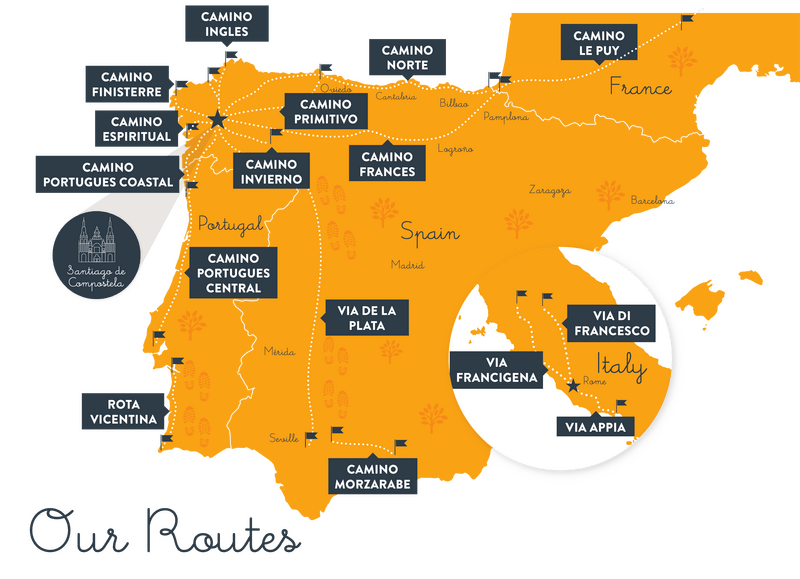
1. Camino Frances
The Camino Frances is the most famous Camino de Santiago trail, featured in books and movies about the Camino, such as ‘The Way’ with Martin Sheen and ‘The Pilgrimage’ by Paulo Coelho.
While it’s not the oldest of the routes, it has been the most popular and well-known route ever since the Middle Ages. Its popularity is so great that 55% of pilgrims walking the Camino do so on the Camino Frances.
This route is 800km long and takes about 5 weeks to walk if you choose to start the journey from St Jean Pied de Port Camino Frances, but you also can start at any point along the route.
Many pilgrims begin their Camino in the Galician town of Sarria and walk The last 100 km of the Camino Frances in about a week. The Camino Frances is the most social Camino, so you’ll be sure to meet fellow pilgrims and maybe make some friends for life as you experience the authentic local culture and food along the way.
2. Camino Portugues
This route was the traditional trail to Santiago de Compostela taken by Portuguese pilgrims, and today the Camino Portugues is the second most popular trail for pilgrims.
This stunning walk weaves along the coastline north of Porto in Portugal and into Spain, taking in some beautiful fishing towns and scenery. The seafood along the route is gorgeous, with fresh produce served in most restaurants.
The Camino Portuguese Coastal starts in the colourful UNESCO city of Porto and follows the Atlantic Ocean before crossing by ferry to A Guarda, in Galicia, and the heart of the Rías Baixas wine region. A popular starting point is Vigo, which is at the beginning of the last 100km of the Camino Portugues to Santiago de Compostela.
Spend time on the white sandy beaches of Northern Portugal and Southern Galicia and soak in the laid-back atmosphere of maritime culture on this peaceful Camino route.
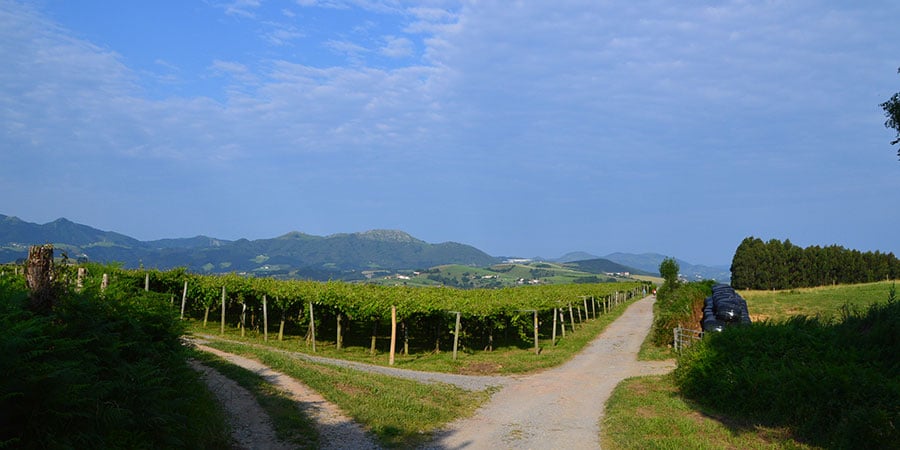
3. Camino del Norte
The Camino del Norte (Northern Way) begins in the stylish city of San Sebastian in Spain’s Basque Country. San Sebastian is a seaside city that is world-renowned for its culinary excellence. This paradise for food lovers is one of the top 10 cities in Europe for Michelin-star restaurants; the only food problem you’ll encounter here is choosing where to eat!
The two most popular sections of this Camino route are the Camino del Norte from San Sebastian to Bilbao in one week and the slightly easier Northern Camino from Bilbao to Santander.
The Camino del Norte takes pilgrims along the coastal villages and towns of ‘Green Spain’, crossing the Basque Country, Cantabria and Asturias before heading inland towards Santiago, carrying pilgrims on a more off-the-beaten-track trail to Santiago.
You can take a dip in the sea to cool off on one of the multitudes of gorgeous beaches and enjoy the atmosphere of the many great towns along the way.
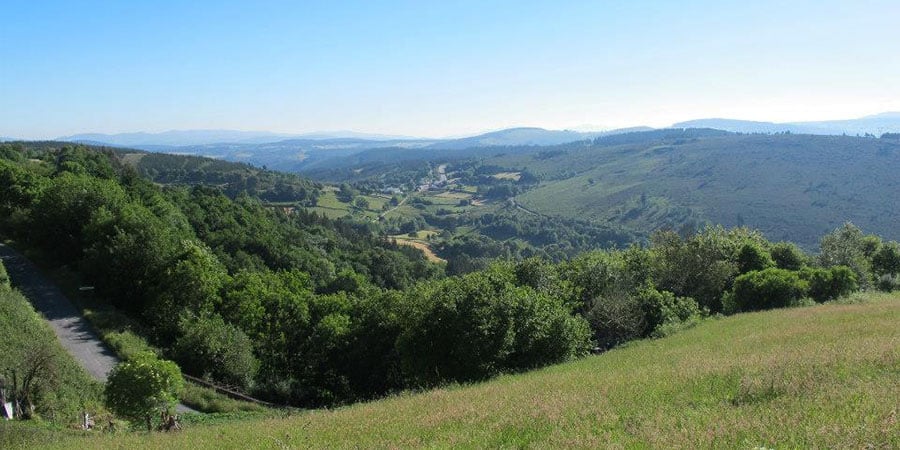
4. Camino Primitivo
The favourite route of the Spaniards, the Camino Primitivo is the oldest of the Camino routes. Also known as the ‘Original Way’, it is the route that has been in use since at least the 9th Century, when much of Spain was under Moorish control.
This challenging route starts in Oviedo in North-Eastern Spain and takes pilgrims on a 311 KM journey from Oviedo to Santiago. There is also the option to do the last 100 KM of the Camino Primitivo into Santiago.
Pilgrims walking the Camino Primitivo will have the chance to experience the UNESCO city of Lugo, considered the best place to eat in Galicia.
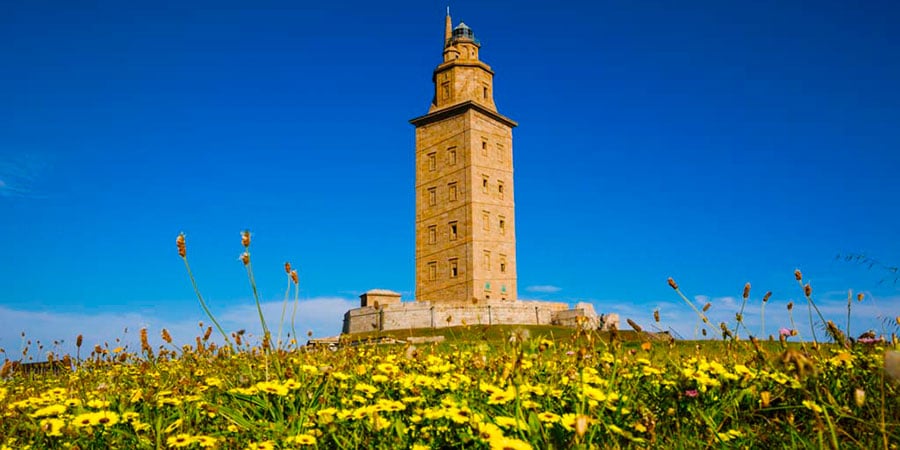
5. Camino Ingles
The Camino Ingles was the preferred route for pilgrims from Britain and Ireland, who used to take the boat to one of these two coastal cities. This Camino route has two starting points: Ferrol and A Coruña, and it’s the shortest Camino route.
If you start your Camino in Ferrol, you will be able to get your Compostela Certificate in Santiago as you will be walking 100km. If you start in A Coruna however, you will need to combine this route with a 25km pilgrimage in Ireland as the route from A Coruna to Santiago is only 75km.
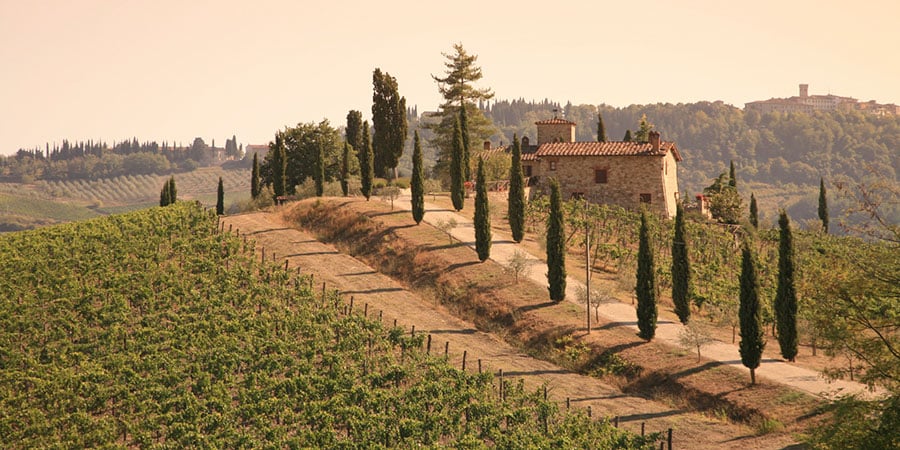
6. Other Camino Routes
The Camino de Santiago is not limited to the routes mentioned above. Pilgrims from all over Europe were walking to Santiago de Compostela to experience the unique nature of the trails.
Interested in choosing a route on the Camino de Santiago that best suits your interests? Check out our Ultimate Guide to Choosing Your Perfect Camino for some inspiration, whether you’re a foodie, history buff or serious hiker.
Other Camino Routes include:
- The Camino Finisterre is a spectacular Camino walk to the world’s end, with cliffs, lighthouses and old monasteries. This Camino has been highlighted in many Camino movies and books over the years.
- The Camino Espiritual Coastal is a variant of the Portugues way, through the inlet of the “Sea of Arousa”. It’s a stunning Camino for lovers of coastal walks.
- Le Chemin du Puy is a beautiful hike in rural France, taking pilgrims through some of the most magical villages and national parks on any of the Camino routes.
- On the Via de la Plata, you will experience the beauty of Galicia as the charming countryside from Ourense to Santiago has remained mostly untouched.
- The Camino de Invierno is the real hidden gem of the routes. It’s a variant of the Via de la Plata and starts in medieval Monforte and crosses the much-loved Ribeira Sacra wine region.
- The Via Francigena is also known as the Camino to Rome. While it is in Italy, we have included it among our routes because it is just as stunning, spiritual and scenic as the Camino de Santiago. Also, Italian food is second to none!
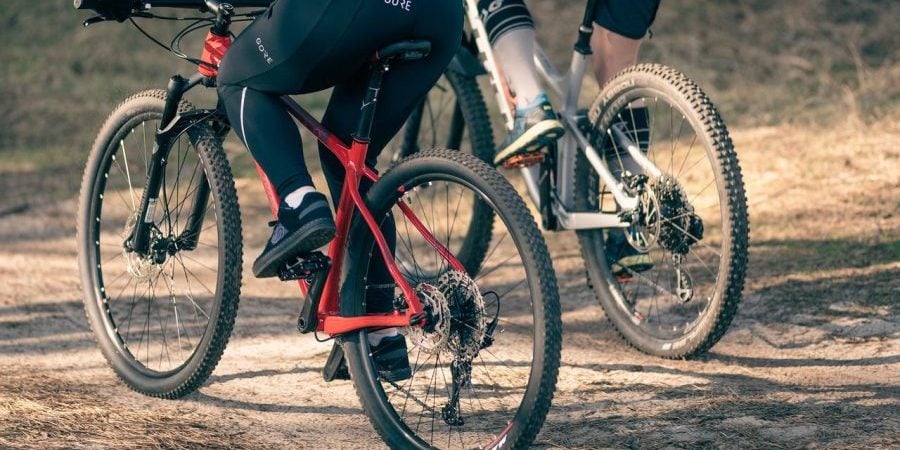
Cycling the Camino de Santiago
While 92% of pilgrims choose to walk to Santiago de Compostela, approximately 5-8% of pilgrims prefer to do the Camino by bike (they are known as ‘Bicigrinos’ or ‘Bicigrinas’, bike pilgrims).
Cycling the Camino allows you to experience the trail on two wheels and in turn, you cover more ground daily. However, you’ll need to cycle at least 200km to receive your Compostela certificate in Santiago (as opposed to 100km walking).
Hitting the trail on a mountain bike is a thrilling experience, but we only recommend it to experienced cyclists and those familiar with bike maintenance.
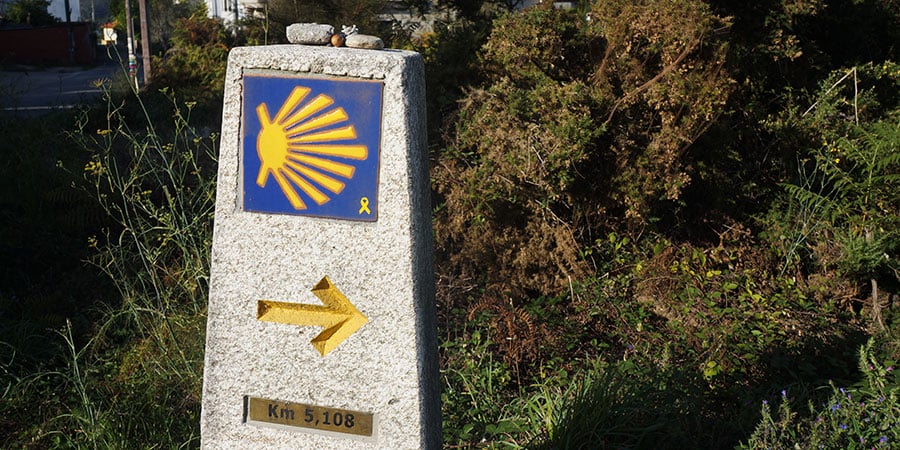
Who walks the Camino de Santiago?
People of all ages and backgrounds walk and cycle the Camino Routes each year. In 2019, people from 190 different countries arrived in Santiago de Compostela.
Camino Statistics released from the pilgrim’s office for 2020 showed that almost 54,000 pilgrims received their Compostela, with the majority of pilgrims coming from European countries and 76% doing it for spiritual reasons.
Many pilgrims do the Camino for religious or spiritual reasons, but many others experience it for its culture, heritage, or as a fitness challenge.
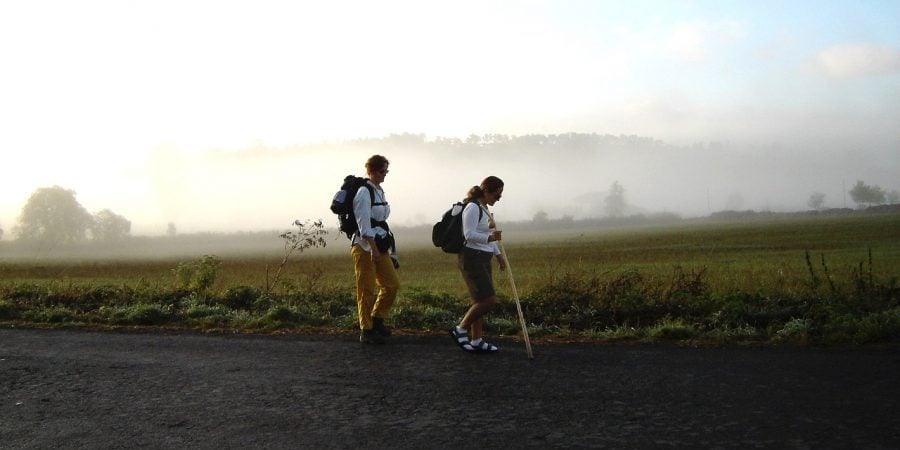
Why should I walk the Camino de Santiago?
The Camino de Santiago attracts pilgrims from all over the world; nearly 350,000 Compostela pilgrim certificates were issued in 2019 alone (compared to just over 1200 in 1985), which will give you some idea of how popular it’s become in recent years.
The reason modern pilgrims walk the Camino ancient trail has evolved, and it’s now a rewarding experience for anyone who enjoys walking or cycling.
There are many ways to embark on this unique challenge and you will meet some wonderful people along the route and visit beautiful Spanish sites. Here are just a few things to enjoy along the way:
- Admire historic sites and monuments.
- With every Camino Way different, you can sample various cultures.
- Enjoy the various landscapes travelling across the country, from coastal Camino routes to vineyards, mountains, or tiny hamlets.
- Taste delicious tapas at every stopping point. In Galicia, they also have lovely pintxos to accompany your favourite evening drink.
- Meet other walkers worldwide and learn about their reasons for taking on this long-loved adventure.
- Discover yourself!
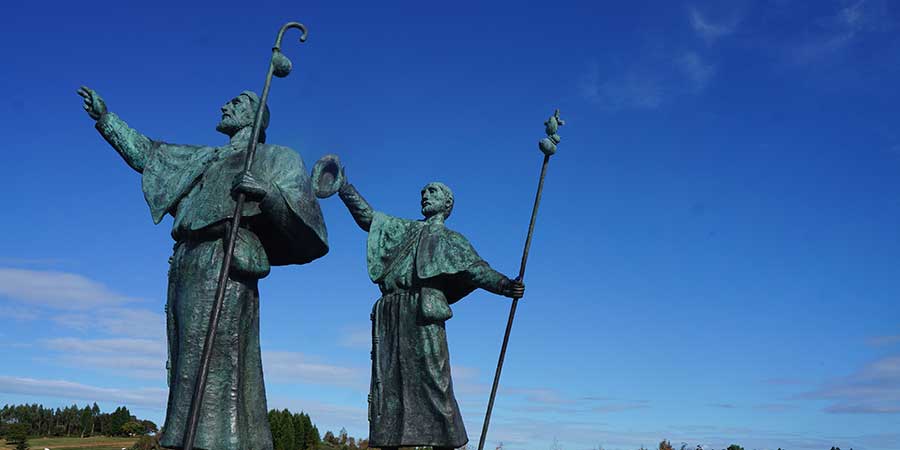
How far do I need to walk?
The beauty of the Camino routes is that you can walk as much or as little as you want; you could spend weeks walking from Le Puy to Santiago, one month walking from St Jean Pied de Port, a week or just a few days.
There is a Camino route for everyone but the one thing to keep in mind is that in order to receive your Compostela pilgrim certificate, you will need to walk at least the last 100km into Santiago de Compostela or cycle the last 200km.
In addition, you should stamp your Pilgrim Passport, also known as the ‘Credential’, along the way to prove that you have indeed walked the distance.
How do I follow the Camino de Santiago trail?
The Camino de Santiago trails are very well marked with scallop shells and Camino markings painted everywhere (trees, roads, walls…). All you have to do is simply follow the yellow arrows and they’ll guide you to Santiago de Compostela!
👉 If you’d like a personalised itinerary, try our Award Winning Camino Planner.
FAQ
Q: Do I need to carry my luggage?
A: No. With luggage transfers, you can walk light and carefree.
Q: How long does it take to walk the Camino?
A: From 5 weeks on the full Camino Francés to 1 week on the last 100km.
Q: Can I cycle instead of walking?
A: Yes, but you’ll need to cover 200km to receive your Compostela certificate.
Q: Is the Camino safe for solo travellers?
A: Absolutely. The Camino is welcoming, safe, and full of fellow pilgrims.
Q: Do I need to be religious?
A: No. Many walk for cultural, personal, or fitness reasons.
Is it year round?
Hi Dan, yes, you can walk the Camino de Santiago year-round. However, some routes close a lot of their services during winter, and the weather in summer can be unpleasant if you aren’t used to the heat. The best times to walk the Camino are in late spring and autumn, from May until the end of October. You can plan your route on our planner https://caminoways.com/camino-de-santiago-planner or you can also contact us, and we can help plan out and create the best trip for you – https://caminoways.com/contact-us
Thank you your page has been very helpful. This has been an intrest for me for a few years now after watching ..the way starring Martin sheen. Cliche I know but for some reason I feel it would be something beneficial to me, both mentally and physically. I may watch the film again and research more to see what my starting point would be based on my home life and being able to escape for a certain time frame etc. Children, work and money etc.
Hi Eithne, thanks for taking the time to write a comment. We’re delighted you’ve found our website useful! And don’t worry about cliches, they are cliches for a reason! Take your time thinking about doing the Camino and if you need any advice, tips or help, our blog is full of articles. We also run monthly webinars on our Facebook page for more information. You can also contact us by email as well. Happy researching 🙂
Hi! Are some of the routes better suited for cycling than others?
Can you recommend where to find more detailed information on cycling, bike rentals etc?
Hi Dee, thanks for your message. You can learn all about our cycling routes and how it works here:
How it works: https://caminoways.com/cycling-the-camino-de-santiago-how-it-works
Routes: https://caminoways.com/cycling-the-camino-routes
Buen Camino!
What are the actual high day time temps the last 100 km in late summer? Thanks!
Hi Elizabeth, thanks for your message. I would recommend checking a weather app for the actual temperatures of the past summer (2022). Unfortunately, there is no way to give actual temperatures ahead of time. You can check averages and general information about the weather on the individual route pages and here: https://caminoways.com/weather-on-the-camino-de-santiago
Hello Sarah, I know there are several Caminos, and you could probably take as long as you’d like on any of them, but which “Camino” is the 1000 mile 30 day Camino?
Hi Joe,
The longest route is the via de la plata (1000km) and we offer the last 100km of this route from Ourense to Santiago. You can walk the full French Way from St Jean to Santiago (780km) in 30 days. You can read more about our routes here: https://caminoways.com/camino-de-santiago-routes and if you have any other questions, please do contact us here: https://caminoways.com/contact-us
Is it at all possible to undertake the Camino De Santiago by coach (bus) from Reading, Berkshire, UK please ?
Thanking you in anticipation,
Kind regards,
Bruce and Marisa Hayes (age 84 and 86)
Hi Bruce, thank you for your message. Unfortunately, no. All of our tours begin at a starting point in Spain, France, Portugal or Italy.
I did the Camino at the end of May for 3 weeks in 2019
Starting in Leon
WE had an incredible time looking forward to doit again in 2024
this time we will start in Pamplona
Cheers
Where do you sleep at night during the treks? Are there hotels, hostels or bed & breakfasts that are on the routes or is it more of backpacking and tents?
Hi Sherry, thanks for your comment. There are many different accommodation options along the Camino. You can read more about them here: https://caminoways.com/camino-de-santiago-accommodation
If you travel with us, we use hotels, from standard to superior depending on availability and your preference when booking.
Do you include a service of moving my suitcase from one hotel to the next evening’s?
Hi Elvira, thanks for your message. We do of course, please see this page for information about our luggage transfer service: https://caminoways.com/camino-luggage-transfers
Is it safe?
Hi Jessica, thanks for your message. The Camino is a safe destination and the majority of people actually walk it solo, men and women. You do have the option to walk the Camino as part of a guided group tour as well.
Is there a way I could do it if I only have 2 weeks off from work?
Hi Daisy, thanks for your message. Yes of course, 2 weeks is plenty of time to get a taste of the Camino. The last 100km of the routes usually takes about a week to walk. You can see these routes here: https://caminoways.com/walking-camino-last-100km-collection
You can also cycle many sections of the routes in under 2 weeks or choose to walk a specific section of the Camino Frances for example. You can have a look at our Camino Planner to help customise your ideal route and duration: https://caminoways.com/camino-de-santiago-planner
Please do also email us or create a quote and we can help you with your planning from there.
Hope this helps!
Hello
Consider to take ALeave ans walk with 10 and 16 year old. What is the best time to avoid heat but not to worry about temperature below +22
Hi Victoria,
It depends on the kind of temperature you are used to. Most people find September/October and the end of April/May to be the most pleasant in terms of walking.
Hello, If I just arrived and started walking along one of the routes would there be accommodation available? Or, would I need to book everything in advance a long the route? Thank you.
Hi Amanda, it is possible but it will depend on demand and whether or not you’re travelling during a busy period. Here’s more information about the accommodation options on the Camino -> https://caminoways.com/camino-de-santiago-accommodation
Hello,
I was thinking of doing the last 100km from mid March to Early April. Is that a good time where most trails would be open?
Hi Kuma, yes Everything reopen from March onwards. March is a good time to walk to Camino anywhere! Please contact us is you need anything else 🙂
I’m still in the dreaming phase of my trip. I really appreciate this website, everyone’s questions and Sarah’s answers. Thank you!
Hi there,
In case if something happens and I wont be able to walk anymore, can I take a taxi or so?
Hi Ellie, if some unforeseen event occurs and you can no longer walk, we provide contact details for local taxis for you (at your own expense). But of course you can take a taxi.
Me and my husband are planning to do the Camino by our selves (DIY) instead of joining a group tour. Is it possible? If so, where can we get our Credentials or Pilgrim Passports?
Are there guided tours, or group tours? Where do you sleep at night? What is the walking/rest recommendations?
Hi Cleofe, Yes it is possible and we would be more than happy to help with your travel arrangements, we offer different levels of accommodations and luggage transfer services. We can also arrange airport transfers for you.
Hi Griselda, yes we have guided tours available, you can see all the available tours and dates here https://caminoways.com/camino-de-santiago-guided-tours. We offer a range of accommodation options and have the breakdown on all of the routes and distances on our website pages. Alternatively you can create your own route using our Santiago Planner to customise your pilgrimage https://caminoways.com/camino-de-santiago-planner
Looking to do the C Walk in 2025. Thanks for your info in the above article.
Pingback: Finding Peace on the Camino | CaminoWays.com